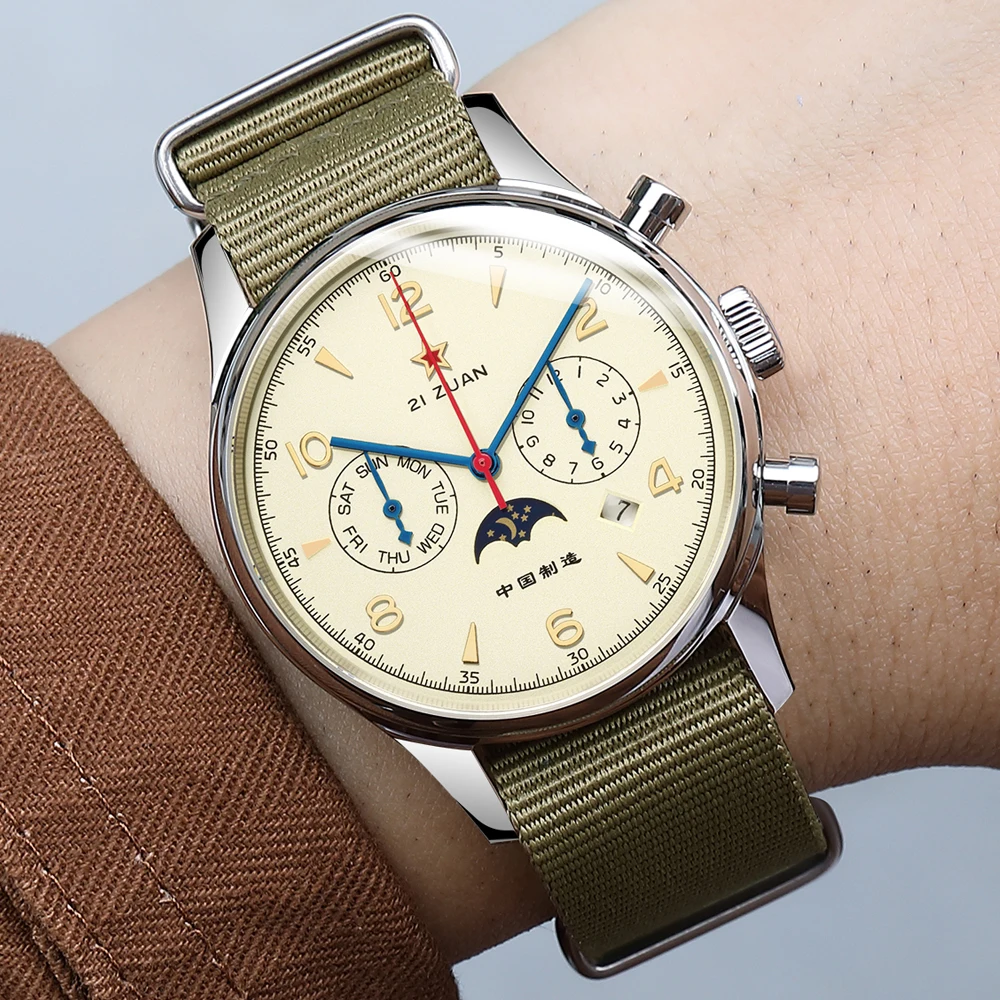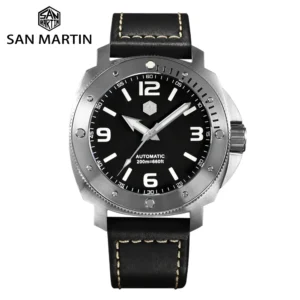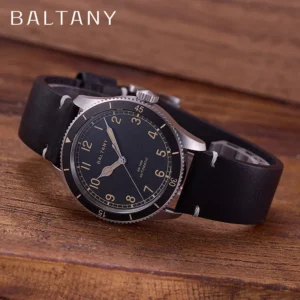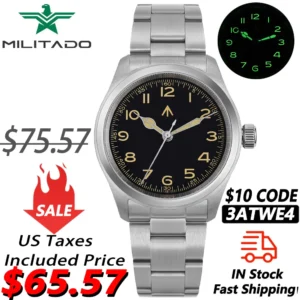When Every Second Counts – The Critical Role of Timepieces in Aviation
A true pilot’s watch stands apart from ordinary timepieces through deliberate design choices—oversized dials for instant readability, luminous markings for low-light conditions, and robust construction to withstand the harsh realities of flight. These distinctive features weren’t merely stylistic choices but survival necessities born from aviation’s earliest days.
From the moment humans took to the skies, accurate timekeeping became inseparable from flight safety and navigation. Early aviators quickly discovered that standard pocket watches weren’t designed for the unique challenges of flight, where split-second decisions could mean the difference between life and death.
The evolution of pilot watches throughout aviation history reflects a fascinating journey of adaptation and innovation. What began as critical navigation tools gradually evolved into cherished symbols of adventure and precision. Throughout this transformation, one principle remained constant: necessity drove innovation. As aviation pioneers pushed boundaries, watchmakers responded with increasingly sophisticated solutions.
The Airborne Challenge: Why Pilots Required Specialized Timepieces
Hostile Environment of Early Flight
Early aviators faced conditions that standard timepieces simply weren’t built to handle. Open-cockpit flying exposed watches to extreme temperature fluctuations, from freezing at altitude to engine heat. Constant vibration from primitive engines threatened mechanical movements, while magnetic fields from early electrical systems could wreak havoc on timekeeping accuracy.
Navigation itself presented unique challenges. Before sophisticated instruments, pilots relied on “dead reckoning”—estimating position based on heading, airspeed, and most critically, time. In these circumstances, a few minutes of timing error could result in being dozens of miles off course, potentially fatal when fuel supplies were limited.
Standard pocket watches presented practical problems too. Removing a pocket watch while managing aircraft controls was dangerously impractical, especially with thick gloves in unheated cockpits. Pilots needed timepieces they could read instantly without removing their hands from controls.
Essential Requirements for Early Aviation Timepieces
The dawn of aviation timekeeping demanded specific features that would define the pilot watch category:
- Exceptional legibility in all conditions, including night flying and poor weather
- Oversized crowns and buttons that could be manipulated while wearing thick gloves
- Robust construction to withstand dramatic temperature changes and constant vibration
- Precise movements that maintained accuracy despite challenging conditions
- Specialized calculation features for navigation and fuel management
These requirements drove watchmakers to develop entirely new approaches to watch design, laying the groundwork for modern automatic pilot watches that continue this legacy of purpose-built functionality.
From Pocket to Wrist: The First Purpose-Built Aviator Timepiece
The pivotal moment in aviation timekeeping came from an unexpected friendship between Brazilian aviation pioneer Alberto Santos-Dumont and watchmaker Louis Cartier. As early as 1904, Santos-Dumont expressed frustration about the danger of accessing his pocket watch while flying his experimental aircraft. His complaints inspired Cartier to design something revolutionary—a timepiece specifically engineered to be worn on the wrist during flight.
The resulting Santos watch represented the first purpose-built aviator’s timepiece, featuring a square case with exposed screws that evoked the industrial nature of early aircraft. Its clean dial with Roman numerals prioritized legibility, while the wristband design freed the pilot’s hands for essential controls—a simple but revolutionary concept at the time.
This shift from pocket to wrist represented more than convenience; it fundamentally changed how pilots interacted with time during flight. The wristwatch became an extension of the cockpit instruments, always visible and immediately accessible. The Santos established baseline expectations for what a proper pilot’s watch should offer: instant access to accurate time without compromising control of the aircraft.
The history of aviation timekeeping tools began with this pioneering design that bridged the worlds of jewelry and flight instruments, leading to countless innovations in the classic pilot watches that would follow.
Battlefield Innovation: World War I and Military Aviation Timepieces
The outbreak of World War I transformed aviation from a daring pastime into a critical military technology. As aircraft evolved from observation platforms into fighting machines, military aviation created unprecedented demand for specialized timepieces that could withstand combat conditions.
For the first time, formal military specifications standardized pilot watch features. Luminous radium paint—despite its now-known dangers—revolutionized night operations by allowing pilots to read their watches in darkness. Watch sizes increased dramatically, with cases often exceeding 40mm in diameter to improve readability in vibrating cockpits. Large Arabic numerals replaced decorative markers, prioritizing instant legibility over aesthetics.
Watchmakers who once crafted luxury items found themselves producing essential military equipment. Companies like Zenith, Omega, and Longines adapted civilian designs to meet harsh combat requirements. These watches needed protection against magnetic fields from early radio equipment and reinforced glass that wouldn’t shatter during combat maneuvers.
The brutal testing ground of aerial warfare refined pilot watch requirements through hard-won experience. Features that failed in combat conditions were quickly modified or abandoned. The resulting timepieces became increasingly specialized tools that directly addressed the unique challenges faced by military aviators.
Many design elements found in today’s military-inspired automatic watches trace their heritage directly to these wartime innovations, where function absolutely dictated form.
Navigation Revolution: The Interwar Period’s Technical Breakthroughs
The Weems Second-Setting System
Between the world wars, long-distance flight became increasingly common but remained perilous due to navigation challenges. U.S. Naval officer Philip Van Horn Weems developed a groundbreaking solution: the Weems Second-Setting System. This innovation featured a rotating bezel or inner dial that could be synchronized precisely with radio time signals, allowing pilots to correct for timing drift without stopping the watch entirely.
This seemingly small improvement had profound implications. By maintaining second-accurate time synchronized with official time signals, navigators could calculate longitude with unprecedented precision, potentially saving aircraft from being dangerously off course during long overwater flights.
The Lindbergh Hour Angle Watch
Building on Weems’ work, Charles Lindbergh collaborated with Longines after his famous transatlantic flight to create the “Hour Angle” watch in 1931. This specialized instrument featured a rotating bezel calibrated to convert time into longitude, essentially turning the wristwatch into a miniature sextant companion for celestial navigation.
The watch allowed pilots to calculate their position using the sun and stars by determining the “hour angle” of Greenwich Mean Time. This innovation represented a significant leap forward in accuracy for long-distance navigation when radio signals weren’t available.
Chronograph Functions Take Flight
During this period, chronograph functions—essentially stopwatch capabilities—became essential pilot watch features. These allowed precise timing of flight legs, fuel consumption calculation, and navigation checkpoints. The addition of multiple subdials and pushers created the complex aesthetic that still defines many chronograph pilot watches today.
What had begun as simple timekeeping tools were now evolving into sophisticated navigation instruments, packed with specialized functions specifically addressing the challenges of increasingly ambitious long-distance flights.
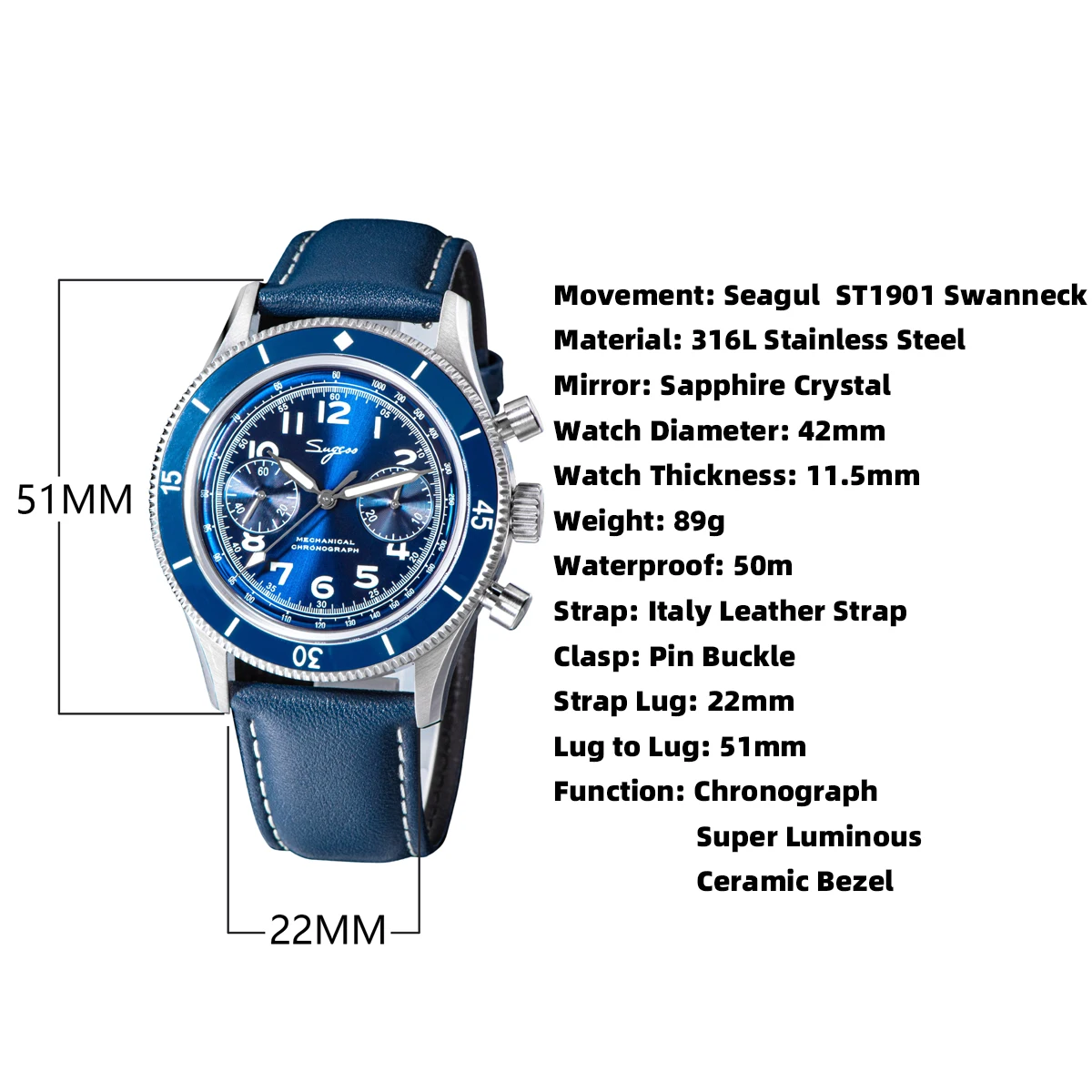
Wartime Precision: World War II and the Birth of Classic Pilot Watch Designs
World War II elevated watches from important equipment to critical war material. The scale and intensity of aerial warfare demanded unprecedented precision and reliability from aviation timepieces, leading to designs that would define the pilot watch category for generations.
German B-Uhren: Function Dictates Form
The German Luftwaffe commissioned what would become some of the most iconic pilot watches in history—the Beobachtungsuhren (observation watches) or “B-Uhren.” Manufactured by firms including A. Lange & Söhne, IWC, Laco, Stowa, and Wempe, these watches followed strict military specifications.
B-Uhren featured distinctive characteristics that became hallmarks of pilot watch design:
– Massive 55mm cases for unmatched readability
– Extra-long straps to wear over flight jackets
– Oversized crowns for operation with gloved hands
– Distinctive triangular marker at 12 o’clock for instant orientation
– High-contrast black dials with luminous hands and markers
– Antimagnetic protection for accuracy near aircraft instruments
These watches were considered navigation instruments rather than personal items, often transferred between pilots rather than owned individually.
Allied Approaches to Aviation Timekeeping
The Allied powers developed their own specifications. American forces standardized the A-11 watch, often called the “watch that won the war,” with its straightforward black dial and hacking seconds feature that allowed precise synchronization between squadrons. British RAF pilots were issued the “W.W.W.” (Wrist. Watch. Waterproof.) specification watches, which balanced readability with more modest proportions.
While different nations took varying approaches to design, all prioritized durability in combat conditions. Anti-shock systems protected delicate movements from the violence of aerial combat and rough landings. Water resistance, while seemingly unnecessary for aircraft, protected against condensation at rapidly changing altitudes.
This wartime period established design principles that would transcend their military origins and influence watch design long after the conflict ended, creating a foundation for the evolution from trench to field watches that would follow.
Form Follows Function: Essential Features of Early Pilot Watches Explained
The distinctive appearance of pilot watches wasn’t about aesthetics—every design element served a specific purpose addressing real aviation challenges:
High-Contrast Dials: Black backgrounds with white or luminous markings provided maximum readability in varying light conditions. This simple color scheme offered the strongest visual contrast possible, allowing quick time readings during complex flight operations.
Oversized Cases and Markings: Large 40mm+ cases weren’t about style but survival. Enlarged numerals and hands could be read at a glance during turbulence or combat maneuvers when pilots couldn’t afford to focus on their wrists for more than a split second.
Luminous Elements: Initially using radium (later replaced with safer materials), luminous hands and markers enabled night flying operations. Pilots navigating in darkness could still monitor elapsed time—critical for navigation and fuel management.
Extra-Large Crowns: The distinctive “onion” crowns found on many pilot watches allowed operation while wearing thick leather flying gloves. This seemingly decorative element was entirely practical—pilots in unheated cockpits couldn’t remove gloves to adjust their watches.
Chronograph Functions: Multiple pushers and subdials provided precise timing capabilities for navigation calculations. Pilots could measure elapsed time for flight legs while maintaining reference to the current time.
Anti-Magnetic Protection: Early aircraft generated significant magnetic fields that could disrupt watch accuracy. Special soft-iron inner cases created protection against these fields, maintaining timing precision essential for navigation.
Shock Resistance: Reinforced movements could withstand the extreme vibrations of piston engines and the jarring impacts of rough landings on primitive airfields.
Each feature of these early watches directly addressed a specific challenge faced during flight operations, making the aviation heritage behind pilot watch features a textbook example of purpose-driven design.
Visionaries and Craftsmen: Key Figures and Brands in Early Aviation Timepieces
The evolution of pilot watches resulted from remarkable collaboration between those who flew aircraft and those who crafted timepieces. This partnership between practitioners and craftsmen drove innovations that neither could have developed independently.
Pioneering Aviators Who Shaped Timekeeping
Early aviators contributed practical insights that transformed watch design. Santos-Dumont’s frustration with pocket watches sparked the creation of the first purpose-built pilot’s wristwatch. Charles Lindbergh’s experience crossing the Atlantic led to his collaboration on the Hour Angle watch, adding celestial navigation capabilities to the wristwatch form.
Navigator Philip Van Horn Weems developed timing systems that dramatically improved position accuracy over long distances. His techniques influenced an entire generation of aviation timepieces focused on precision navigation.
Test pilots provided invaluable feedback about readability under extreme conditions, directly influencing dial design and luminous treatments. Their experiences in progressively faster and higher-flying aircraft continuously pushed watchmakers to improve their designs.
Watchmakers Who Rose to the Aviation Challenge
Several watch manufacturers made particularly significant contributions to aviation timekeeping. Longines embraced aviation early, working directly with Weems and Lindbergh to create specialized navigation watches. Their chronograph expertise proved particularly valuable for timing flight segments.
Breitling developed slide rule bezels that allowed pilots to perform critical calculations without separate tools. IWC created the first anti-magnetic pilot watches specifically addressing the growing electrical systems in aircraft. Hanhart and Tutima pioneered flyback chronographs that allowed instant timing resets without stopping—crucial for consecutive navigation legs.
These collaborative relationships between aviators and watchmakers resulted in timepieces with authentic purpose, evident in the history of watches worn by aviation pioneers that combined horological expertise with practical flying experience.
Design Evolution: Comparing Landmark Early Pilot Watch Models
The evolution of pilot watches followed different paths across nations and applications, with each approach reflecting specific priorities and operational environments.
| Design Philosophy | Key Features | Representative Models | Primary Application |
|---|---|---|---|
| German Observation | Oversized cases (55mm), large triangular 12 o’clock marker, high-contrast numerals, central seconds | B-Uhr Type A & B | Navigation and bombing operations |
| Allied Military | Moderate sizing (32-36mm), high legibility, hack feature for synchronization | A-11, W.W.W. | Fighter operations and coordinated missions |
| Navigation Specialist | Rotating bezels/rings, additional scales, complex markings | Hour Angle, Weems models | Long-distance navigation, especially oceanic |
| Civilian/Commercial | Chronograph functions, multiple time zones, more refined aesthetics | Early multi-function chronographs | Commercial aviation and general flying |
Different design approaches emerged based on specific operational needs. German observer watches prioritized absolute legibility for navigation and timing bombing runs. Allied designs balanced readability with practicality for fighter pilots who needed watches that wouldn’t snag on controls in tight cockpits.
Navigation specialist designs incorporated computational aids for position-finding, while civilian models often featured more refined aesthetics while retaining essential functionality. The pilot watch design across aviation eras shows how changing flight requirements drove continuous evolution.
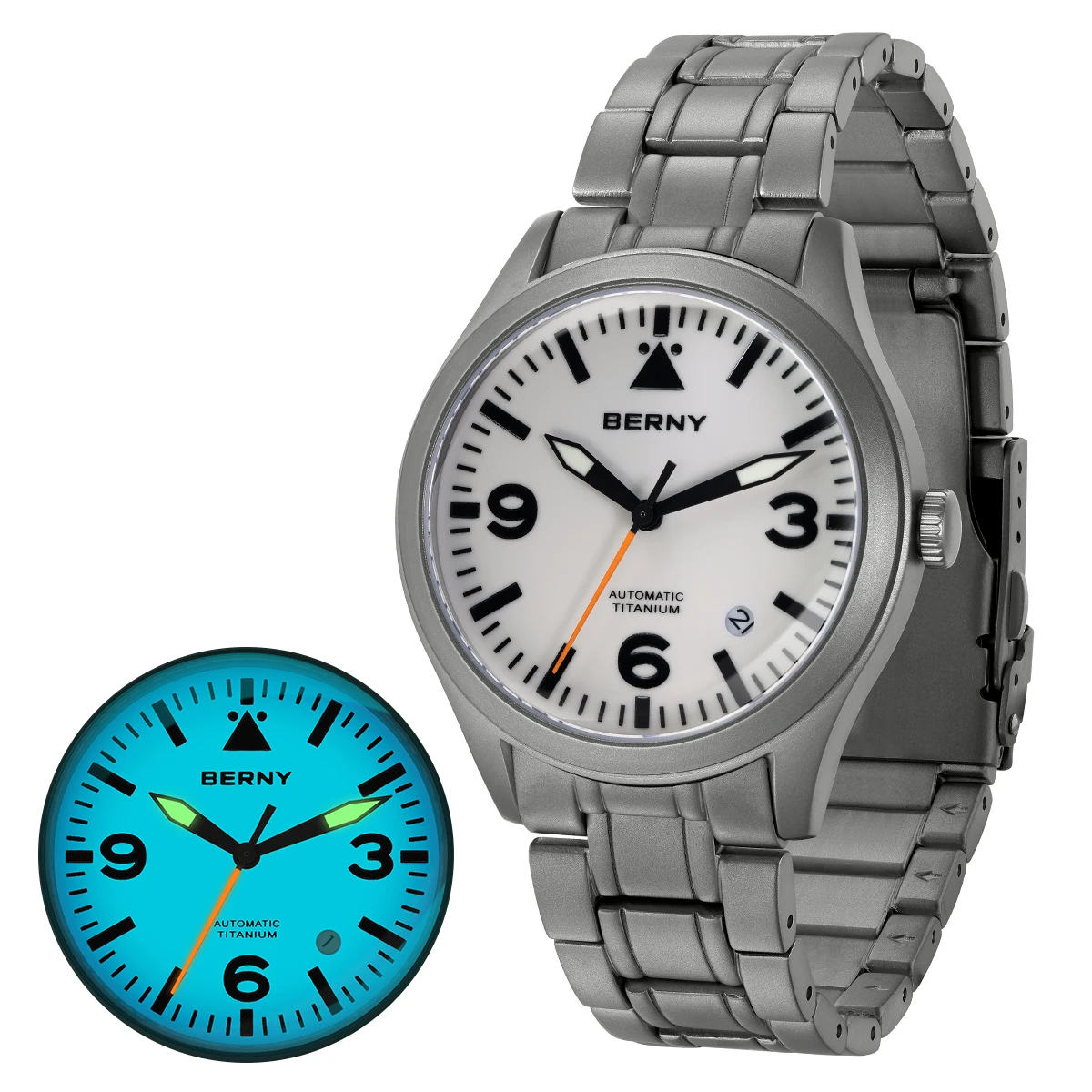
Beyond Instruments: The Cultural Impact of Early Pilot Watches
Aviation timepieces transcended their utilitarian origins to become powerful symbols of human achievement. These watches weren’t merely instruments but tools that enabled brave individuals to conquer the skies through precise navigation and timing.
In an era when flight remained dangerous and challenging, a proper pilot’s watch represented the difference between successful navigation and becoming hopelessly lost. These timepieces directly contributed to aviation safety by enabling accurate fuel calculations, position fixing, and coordination of complex flight operations.
As public fascination with aviation grew, the watches associated with these daring exploits gained cultural significance. When Charles Lindbergh crossed the Atlantic or Amelia Earhart attempted her around-the-world flight, their timepieces became part of their mystique and adventure. These watches represented humanity’s newest frontier—the sky itself.
The pilot’s watch gradually transformed from specialized equipment to a symbol of precision engineering and adventurous spirit. Even for those who never left the ground, these timepieces carried the romance of flight and the technical prowess required to conquer it. The journey from cockpit to icon began during these formative decades when aviation itself was transforming from experimental daring to everyday reality.
Military Inspired Automatic Watches, Rugged Automatic Watches, Tactical Automatic Watches
Price range: $852.14 through $994.60 Select options This product has multiple variants. The options may be chosen on the product pageAutomatic Chronograph Watches, Chronograph Pilot Watches
Price range: $233.36 through $237.58 Select options This product has multiple variants. The options may be chosen on the product pageClassic Automatic Dress Watches, GMT Automatic Watches, GMT Pilot Watches
Price range: $1,240.86 through $1,463.33 Select options This product has multiple variants. The options may be chosen on the product pageBronze Automatic Watches, Military Inspired Automatic Watches, Professional Spec Dive Watches
Price range: $1,442.21 through $1,442.82 Select options This product has multiple variants. The options may be chosen on the product pageClassic Pilot Watches, Military Inspired Automatic Watches
$561.00 Select options This product has multiple variants. The options may be chosen on the product pageClassic Field Watches, Military Inspired Automatic Watches
Price range: $280.87 through $338.51 Select options This product has multiple variants. The options may be chosen on the product page
From Necessity to Icon: The Enduring Legacy of Aviation Timepieces
What began as survival equipment has evolved into cherished symbols of precision and adventure. The transformation of pilot watches from cockpit necessities to sought-after accessories represents one of horology’s most fascinating journeys.
Features originally designed for pure functionality—oversized crowns for gloved operation, high-contrast dials for instant readability, robust cases for durability—have become distinctive aesthetic elements that define the pilot watch category. Today’s watch enthusiasts specifically seek these design elements, often without realizing their practical origins in early flight.
The authentic aviation heritage creates genuine value in modern watches. When contemporary brands like Sharp Aspect incorporate these classic design elements, they’re not merely adopting a style but continuing a tradition of purposeful design. The history embedded in these watches connects wearers to an era when timekeeping wasn’t a convenience but a matter of survival.
The evolution of pilot watches from cockpit tools to iconic accessories continues today, with modern interpretations balancing historical authenticity with contemporary materials and movements. Features like multi-timezone functions in pilot watches reflect how these timepieces continue evolving to meet changing aviation needs while maintaining their distinctive character.
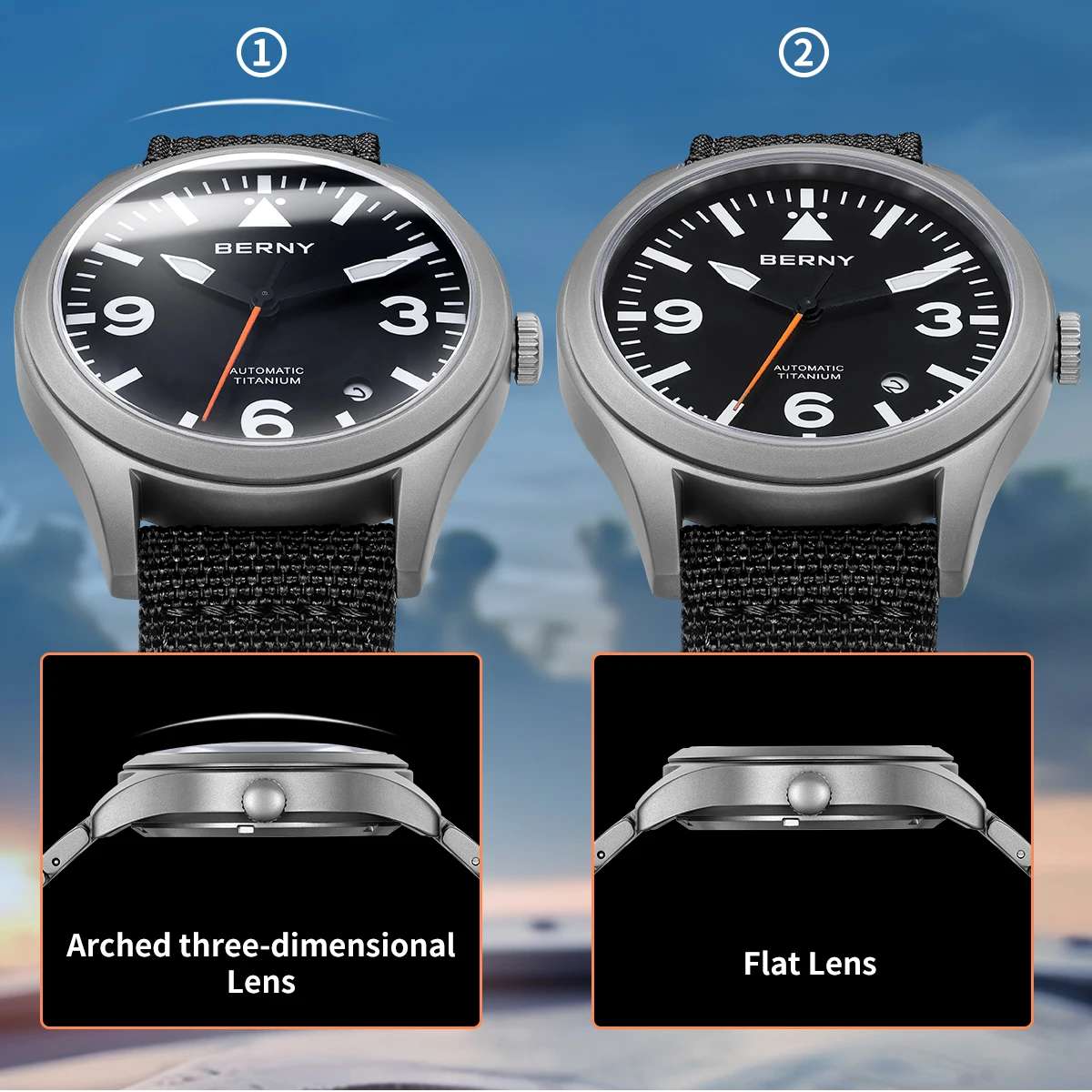
Technical Glossary: Understanding Pilot Watch Terminology
Bezel – The ring surrounding the watch face, often rotating on pilot watches to track elapsed time or perform calculations
B-Uhr (Beobachtungsuhr) – German for “observation watch,” referring to the large navigation watches issued to Luftwaffe navigators during WWII
Chronograph – A watch with stopwatch functionality, typically featuring additional subdials and pushers
Crown Guards – Protective extensions of the case that shield the winding crown from impact
Flyback Function – A chronograph feature allowing instant reset and restart with a single button press, originally developed for consecutive timing of navigation legs
GMT/Dual Time – Functionality showing multiple time zones simultaneously, essential for long-distance flight
Hour Angle – A navigation measurement expressing the difference between local time and Greenwich Mean Time, used for calculating longitude
Luminous Material – Compounds applied to hands and markers that glow in darkness, originally radium-based but now using safer alternatives
Slide Rule Bezel – A specialized rotating scale system allowing pilots to perform mathematical calculations directly on the watch
Understanding these specialized terms helps appreciate the sophisticated functionality built into aviation timepieces, as outlined in our guide to mastering essential pilot chronograph features.

